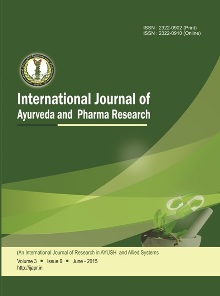An Ethnobotanical and Folklore Study of Medicinal Plants in Eturnagaram Wildlife Sanctuary and Malluru Forest, Telangana
Abstract
Ayurveda is rooted in plant-based healing traditions, many of which are still practiced among tribal communities in India. Yet, this knowledge is under threat due to deforestation, modernization, and decline in intergenerational transfer. Ethnobotanical surveys are essential for documentation, conservation, and providing scientific leads for pharmacological validation. Aim and Objectives: Primary objectives: (i) To document the indigenous knowledge of local communities regarding medicinal plants. (ii) To identify and catalogue medicinal species with reference to forest type and canopy structure. Secondary objectives: (i) To identify and geo-tag rare and endangered species. (ii) To assess their conservation status. (iii) To explore their potential for modern medicine and sustainable livelihoods. Materials and Methods: Fieldwork was carried out in eight tribal villages using participatory rural appraisal, semi-structured interviews, and guided field walks. Twenty-five folklore healers (aged 40–75 years) provided information on plant names, parts used, preparation methods, and therapeutic indications. Data were validated through photographs, herbarium specimens, and conservation status as per IUCN and national references. Results: A total of 212 medicinal plant species (69 families, 165 genera) were documented, of which 99% were angiosperms. Growth forms included trees (88), herbs (62), climbers (49), and shrubs (13). About 94% were indigenous, with Fabaceae (27 spp.), Malvaceae (10), and Amaranthaceae (8) as dominant families. Thirty-three species were regularly used, with 15 most frequently applied, mainly for scorpion and insect bites, wound healing, and bone fractures. Applications were chiefly for human medicine (90%), with limited veterinary (8%) and dual (2%) use. Conclusion: The study establishes a baseline inventory of ethnomedicinal plants in the region. It underscores the need for phytochemical validation, digital archiving, and youth engagement. Community-led conservation and integration with Ayurveda can safeguard biodiversity and strengthen future drug discovery.
Copyright (c) 2025 International Journal of Ayurveda and Pharma Research

This work is licensed under a Creative Commons Attribution-NonCommercial-ShareAlike 4.0 International License.


